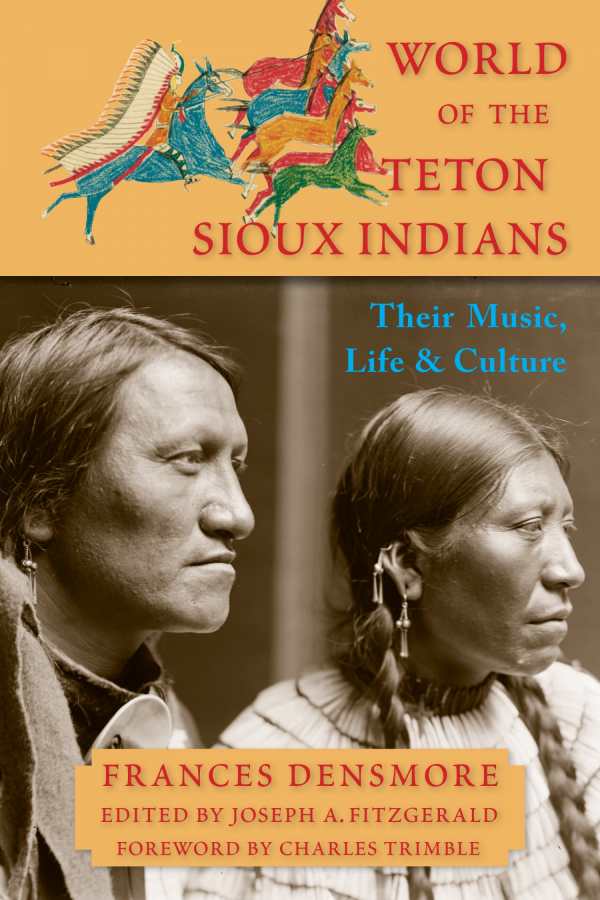World of the Teton Sioux Indians
Their Music, Life, and Culture
- 2016 INDIES Finalist
- Finalist, History (Adult Nonfiction)
- 2016 INDIES Finalist
- Finalist, Regional (Adult Nonfiction)
- 2016 INDIES Finalist
- Finalist, Religion (Adult Nonfiction)
An intimate look at Indian life through the memories of those who lived it, Densmore’s book is richly illustrated.
Frances Densmore’s World of the Teton Sioux Indians paints a vivid picture of much of pre-reservation tribal life through firsthand accounts of traditional Lakota social life—including its religion, dreams, gatherings, songs and dances, buffalo hunts, treatment of the sick, and care for the poor–as recorded by her on the Standing Rock and Lake Traverse Reservations in North and South Dakota.
The end of the distinctive tribal life of the Teton Sioux was marked by three events: the last Sun Dance, held in 1881; the last great buffalo hunt, held in 1882; and the 1899 ceding of nine million acres of their land to the United States Government. The Sioux were then assigned to five smaller reservations, which they were forbidden to leave without permission from a government Indian agent.
Densmore’s work to collect and preserve the music, life, and culture of American Indian tribes was done at a time when everything possible was being done to ensure that they would be obliterated and forgotten. Conquered tribes, decimated by diseases to which they had no immunity, were forced onto reservations; native religions and ceremonies were prohibited; and children were taken from their homes and made to attend special Indian schools where they were punished for speaking their tribal language. To preserve what it could, the Smithsonian Institution sent ethnologists and anthropologists to record tribal languages and songs; as the Smithsonian’s first ethnomusicologist, Densmore worked nearly sixty years to produce thousands of wax cylinder recordings of songs and stories from about thirty-five Indian tribes. Many of these have now been rerecorded with current technology and given to the tribes of their origin to aid in the resurgence of tribal cultures.
An intimate look at Indian life through the memories of those who lived it, Densmore’s book is richly illustrated with over 130 full color and black-and-white photographs that bring the Lakota people and their ways to life. Now considered a classic of Lakota culture, it is an excellent guide for those who wish to understand the heart of these people, for whom the greatest reward was that their names and deeds be remembered.
Reviewed by
Kristine Morris
Disclosure: This article is not an endorsement, but a review. The publisher of this book provided free copies of the book to have their book reviewed by a professional reviewer. No fee was paid by the publisher for this review. Foreword Reviews only recommends books that we love. Foreword Magazine, Inc. is disclosing this in accordance with the Federal Trade Commission’s 16 CFR, Part 255.

